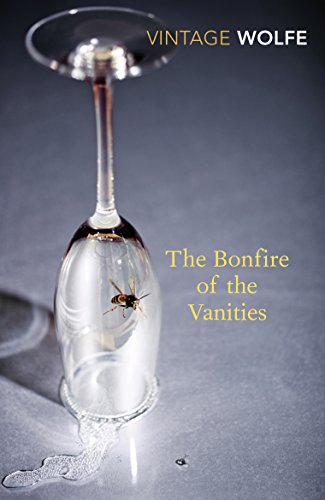Review: The Bonfire of the Vanities
01 Friday Aug 2025
Written by Charles Harris in Books, Journalism, Reviews, Satire
Tags

I asked in a blog some years ago if satire worked. If it does, why is the world in such a shitty place? But then, perhaps we’re misunderstanding. Perhaps satire was never intended to improve the world.
Maybe its job is to help us bear the shittiness by making us laugh at it. And perhaps in the process a few people might possibly realise there are better ways to exist.
Tom Wolfe was one of the great satirists of his era, a writer who not only turned journalism on its head but knew how to skewer stupidity and ego when he saw it. His 1988 debut novel The Bonfire of the Vanities was a major inspiration for me to write my satirical take on tabloid journalism The Breaking of Liam Glass.
I revisited Wolfe’s book recently with some trepidation. Would it stand up after all these years (almost four decades!)?
Bonfire of the Vanities review
Starting out as a journalist, for the Washington Post and then the New York Herald Tribune, Wolfe began incorporating increasingly literary and fiction-writing techniques into his articles. From onomatopoeia, free association, to eccentric punctuation and humour, he pushed the boundaries to create what he called New Journalism.
All this is visible in Bonfire, along with what he called “saturation reporting.” Saturation reporting involved not just interviewing and researching but actually staying around long enough that revealing incidents happened. It meant that he became a more involved – less detached – witness.
For Bonfire he went deep into the many worlds that exist in New York – from the upper-classes with salaries and outgoings like telephone numbers, and journalists desperate for gossip to report, to the lawyers on the make, and all the way to the worst neighbourhoods of the Bronx.
At its centre is Sherman McCoy, Wall Street bond-trader juggling his high-maintenance wife and nubile young mistress, Maria. One night Maria is driving him in his top-of-the range Mercedes when they lose their way and find themselves in the Bronx. Panicking, she knocks down a young black man and drives off, leaving the man in a coma.
With no witnesses to speak of, Sherman gambles that he can get away with it. But he’s reckoned without the pile-on that follows. As he desperately runs from one crisis to another, can he stave off disaster?
But does it work?
Running at over 700 pages, Bonfire is nevertheless an easy read – a true page-turner, funny and gripping by turns.
Sherman is both vain and foolish enough to be a great anti-hero. We watch with baited breath – torn between empathy for his plight and the fascination of watching him get deeper and deeper into the mire.
Wolfe’s depiction of New York life at all levels is without parallel. He juggles the many characters effortlessly. And his satire hits with precision, as good satire should.
He eviscerates the expensive life-style of the high-rollers, such as Sherman and his wife. At the same time, he is capable of creating monsters such as Reverend Reggie Bacon, who runs the ghetto for his own ends – charismatic warlord crossed with con-man. For Bacon, a hospitalised Black man is nothing but an opportunity.
As he is for assistant DA Larry Kramer (with a keen eye for a juror wearing brown lipstick). And Peter Fallow, expat British journalist and gossip-hound, who can be bought for the price of a lunchtime bottle of two of house wine.
Everyone is out for themselves. It’s a jungle full of predators, and Sherman McCoy is at risk of becoming lunch himself.
Human foibles
It would have been easy for Wolfe to have written these as stereotypes. Yet they are all living, rounded – clearly-observed – characters, with human foibles that we can empathise with.
It’s sharp writing of the highest calibre.
Having said that, avoid the film adaptation if you value your time at all. It is a disaster all of its own making. A slow-motion train wreck where the first casting mistake leads inevitably to the next big misstep, and the next, and the next…
It did have one good outcome. Julie Salamon has written a tremendous book about the making of the movie and how it became the train-crash that it did. The story she tells is both brilliant and horrifying at the same time. A satire all of its own.
If you enjoy this…
If you like books like The Bonfire of the Vanities and The Devil’s Candy, you could really enjoy my satire on tabloid journalism The Breaking of Liam Glass.
The story of how a little lie leads to bigger lies and riots, and puts a boy’s life at risk. The Breaking of Liam Glass has been nominated for two literary awards and has been an Amazon best-seller in its genre.
Check it out to dive into a world of tabloid sleaze and betrayal today.
Read more
The Bonfire of the Vanities – the book, not the movie
The Devil’s Candy: “Bonfire of the Vanities” Goes to Hollywood by Julie Salamon

